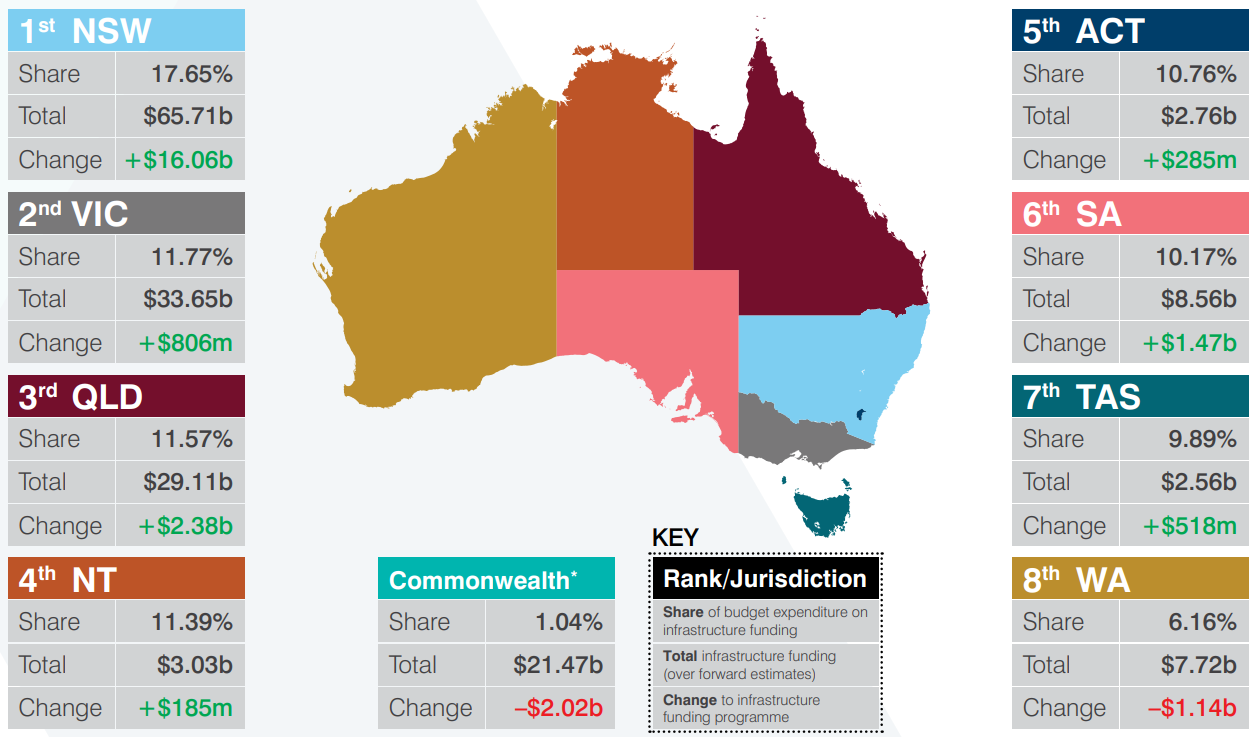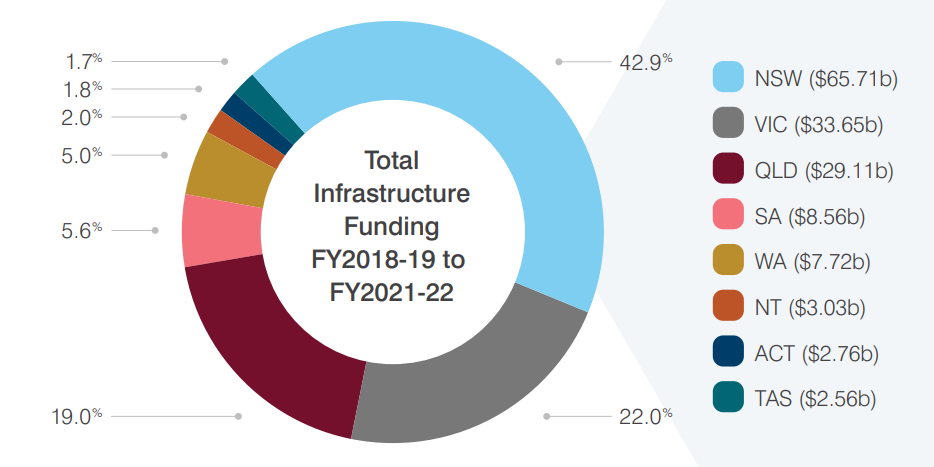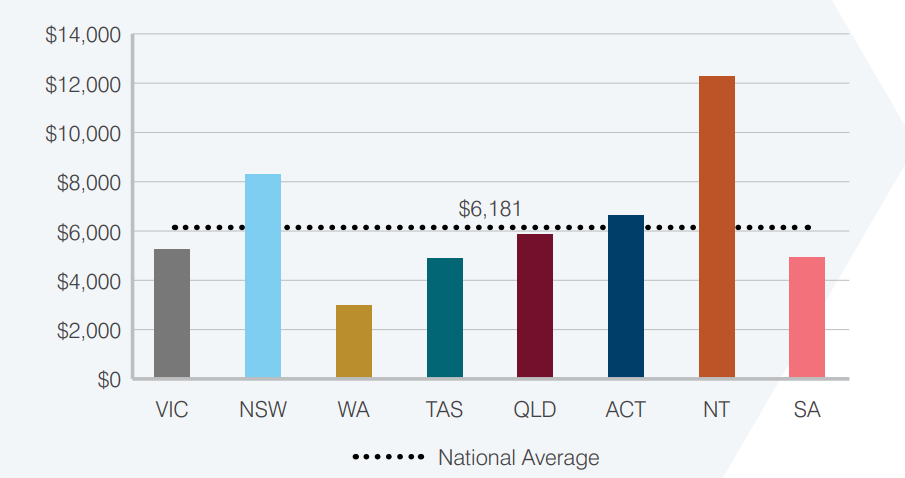
Australian Infrastructure Budget Monitor 2018-19
The 2018-19 Australian Infrastructure Budget Monitor reaffirms the two-economy divide in infrastructure across Australia. NSW and Victoria, ranked first and second, have large infrastructure funding commitments facilitated by strong fiscal positions. Asset recycling continues to support growth, with both states benefiting from selling their shares in Snowy Hydro to the Commonwealth, among other asset divestments.
Infrastructure Partnerships Australia’s Australian Infrastructure Budget Monitor measures jurisdictions based on infrastructure funding commitments over the current budget year and forward estimates (FY2018-19 to FY2020-21). This report collates information from the latest Budget papers from Commonwealth, state and territory governments to compare their infrastructure investment programs.
The purpose of the Australian Infrastructure Budget Monitor is to inform the community, industry and researchers about historical and projected public infrastructure investment activity in Australia. It allows readers to compare and evaluate the commitment by governments to building infrastructure, which provides both a near term stimulation impact on the economy and the foundation for future economic and social development.

Sign up for more Infrastructure Analysis
Sign up for our popular weekly Infrastructure Report newsletter and keep up to date on all the latest developments in the sector.
Sign Up

